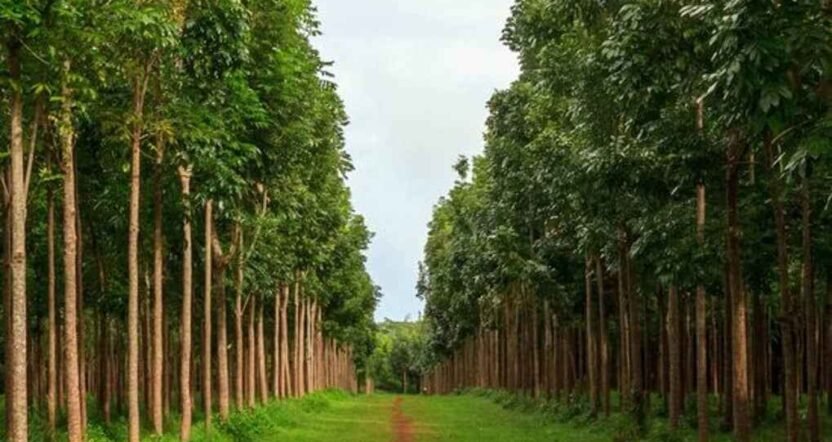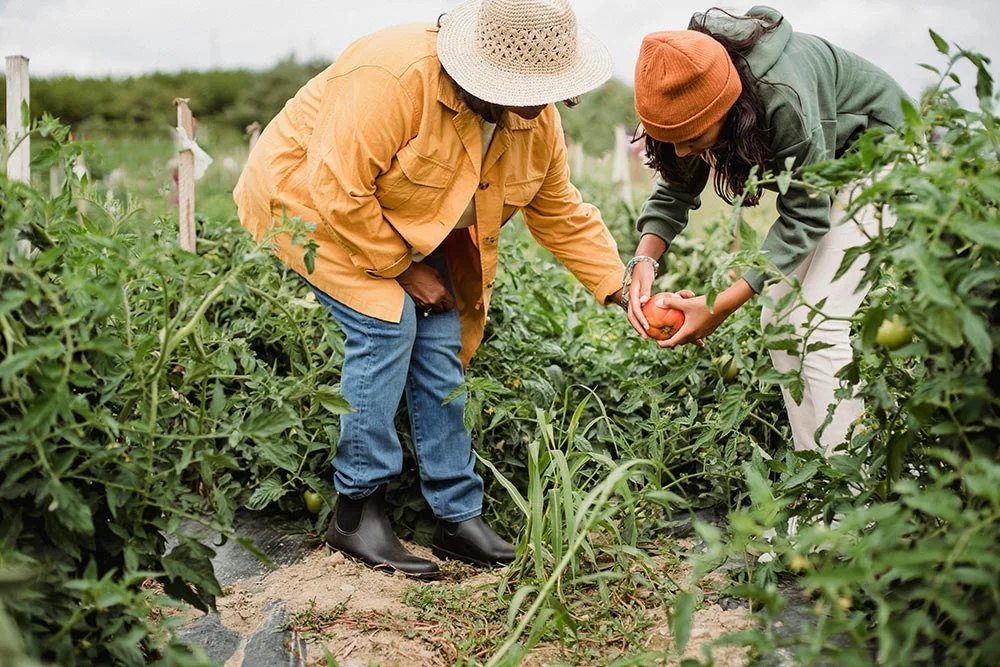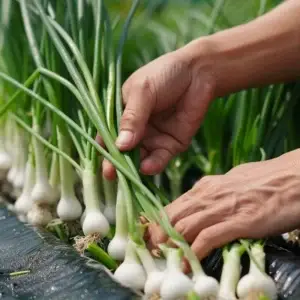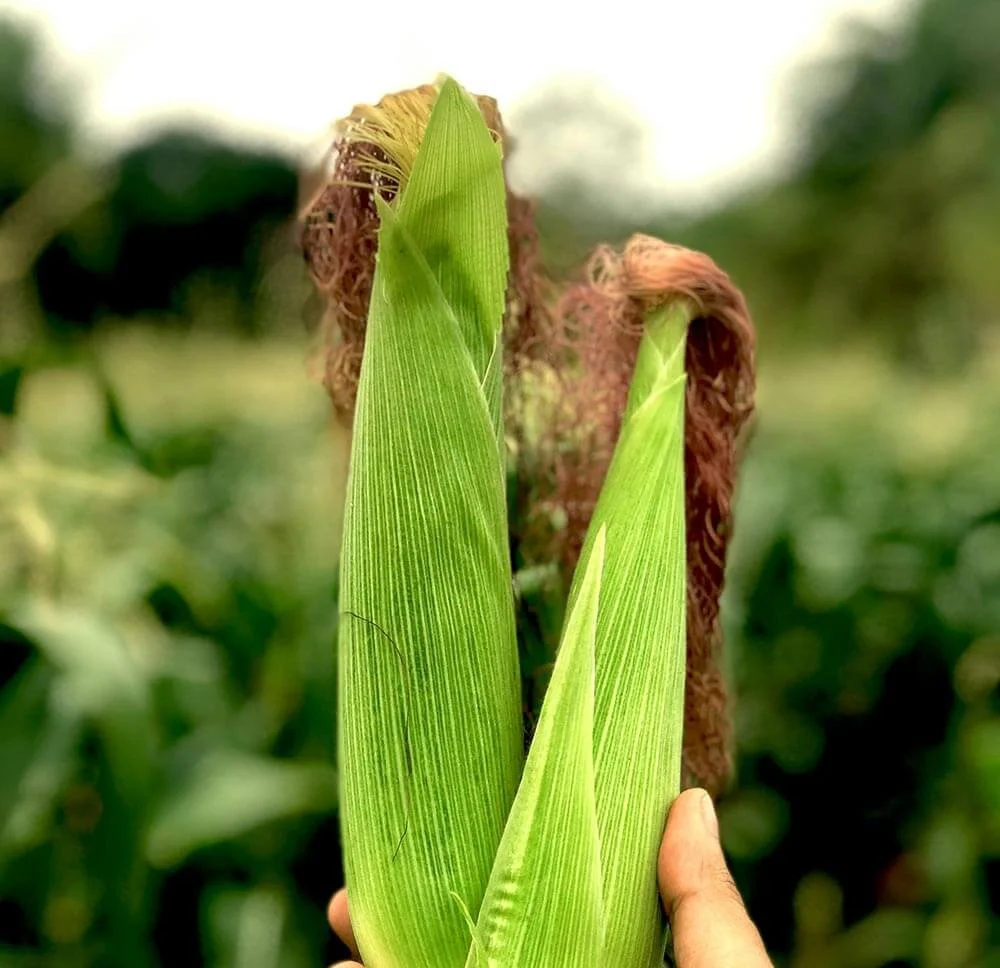Tree farming is a sustainable and profitable business that offers numerous benefits for the environment, the economy, and society. KOSOF Trust is dedicated to promoting tree farming as a viable venture that not only provides financial returns but also contributes to ecological balance and national development.
Investment in Tree Farming
Tree farming, also known as agroforestry, is a long-term and sustainable investment with significant environmental and financial benefits. It involves planting, nurturing, and harvesting trees for timber, fruits, medicinal plants, or other products. Investing in tree farming requires careful planning and understanding of costs, returns, and market trends.
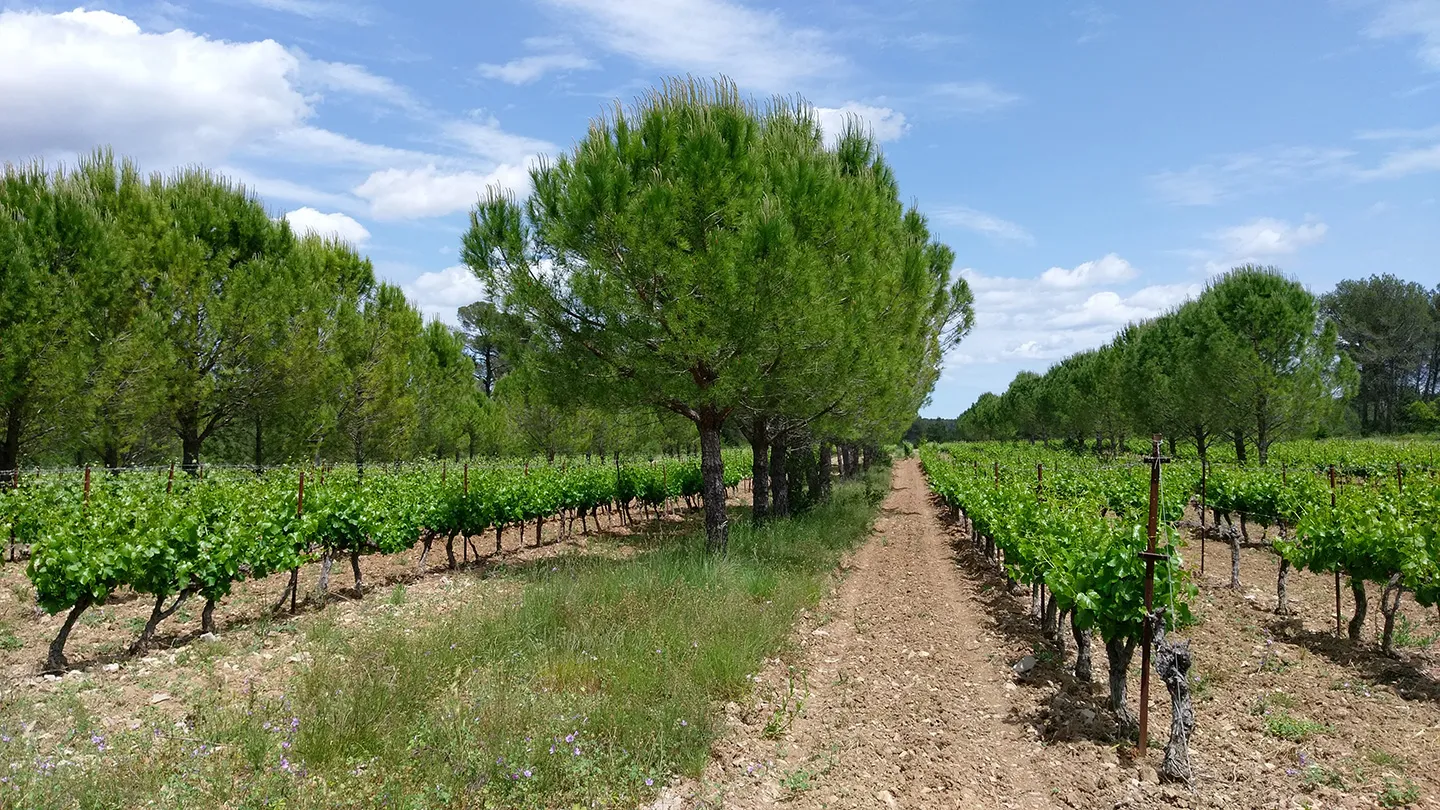
Trees absorb carbon dioxide, helping to combat climate change.
They improve soil quality, reduce erosion, and increase groundwater levels.
Tree farming creates habitats for wildlife, promoting biodiversity.
Improves air quality and enhances the beauty of landscapes.
Offers educational opportunities about sustainable practices and conservation.
KOSOF Trust supports investors by providing guidance, high-quality saplings, organic fertilizers, and sustainable farming techniques. With proper management, the return on investment can be substantial, as mature trees can fetch high prices in the market.
Tree farming is a forward-thinking venture that offers a blend of environmental conservation and economic growth. By planting trees for timber, fruits, or medicinal products, investors can enjoy long-term financial gains while contributing to a healthier planet.Key benefits of tree farming include high profitability through the sale of timber and fruits, enriched soil quality, reduced carbon emissions, and employment opportunities in rural areas. It also offers unique advantages like earning carbon credits, tapping into export markets, and benefiting from government subsidies for agroforestry.Tree farming is a scalable and sustainable business model, ideal for investors seeking economic returns and ecological impact. Partnering with trusted organizations like KOSOF Trust ensures expert guidance, access to high-quality resources, and the best practices for successful farming. Tree Farming: A Sustainable Investment with Endless Benefits
Key Investment Components
a. Land Acquisition or Leasing
- Requirement: A suitable piece of land with good soil quality, access to water, and adequate sunlight.
- Cost: Varies depending on the location and size. Leasing may be a cost-effective option for smaller investments.
b. Tree Saplings or Seeds
- Requirement: High-quality, fast-growing tree species such as teak, sandalwood, mahogany, or fruit-bearing trees like mango or guava.
- Cost: Typically ranges from ₹10 to ₹100 per sapling, depending on the species and quality.
c. Soil Preparation and Fertilization
- Requirement: Land clearing, plowing, and enriching the soil with organic fertilizers to ensure optimal tree growth.
- Cost: Initial preparation can cost between ₹5,000 to ₹15,000 per acre, including labor and materials.
d. Irrigation System
- Requirement: A proper irrigation system such as drip irrigation or sprinklers to ensure consistent water supply.
- Cost: Installing a drip irrigation system can cost ₹20,000 to ₹30,000 per acre, but it is a one-time investment.
e. Maintenance and Labor
- Requirement: Regular activities such as weeding, pruning, pest control, and monitoring tree health.
- Cost: Approximately ₹10,000 to ₹20,000 per acre annually.
f. Fencing and Protection
- Requirement: Fencing to protect trees from grazing animals or trespassers.
- Cost: Basic fencing can cost ₹25,000 to ₹50,000 per acre.
1. Potential Returns
a. Timber Trees
- Teak: Harvested after 15–20 years, yields ₹10–20 lakhs per acre.
- Sandalwood: Extremely valuable; can yield ₹50–60 lakhs per acre in 20–25 years.
b. Fruit-Bearing Trees
- Mango/Guava: Start yielding fruits within 3–5 years, generating ₹1–3 lakhs annually per acre.
c. Short-Term Crops with Trees
- Intercropping with vegetables or herbs like turmeric can provide interim income.
2. Funding Options
- Government Subsidies: Many state and central government programs offer subsidies for tree farming under agroforestry schemes.
- Loans: Agricultural loans with low-interest rates are available from banks and financial institutions.
3. Risks and Challenges
- Long Gestation Period: Timber trees take years to mature, requiring patience.
- Market Volatility: Timber and fruit prices may fluctuate based on demand and supply.
- Pest and Disease Control: Requires consistent monitoring and preventive measures.
4. KOSOF Trust Support
KOSOF Trust provides comprehensive support to tree farming investors, including:
- High-quality saplings and organic fertilizers.
- Expert advice on land preparation, planting, and maintenance.
- Access to sustainable farming techniques and market connections.
- Guidance on government subsidies and loans.
Additional Points on Investment in Tree Farming
Market Demand: Timber trees like teak, sandalwood, or mahogany fetch high market prices.
Climate Compatibility: Ensure the chosen species thrives in the local climate.
Intercropping Potential: Trees that allow room for crops like turmeric, ginger, or vegetables can provide interim income
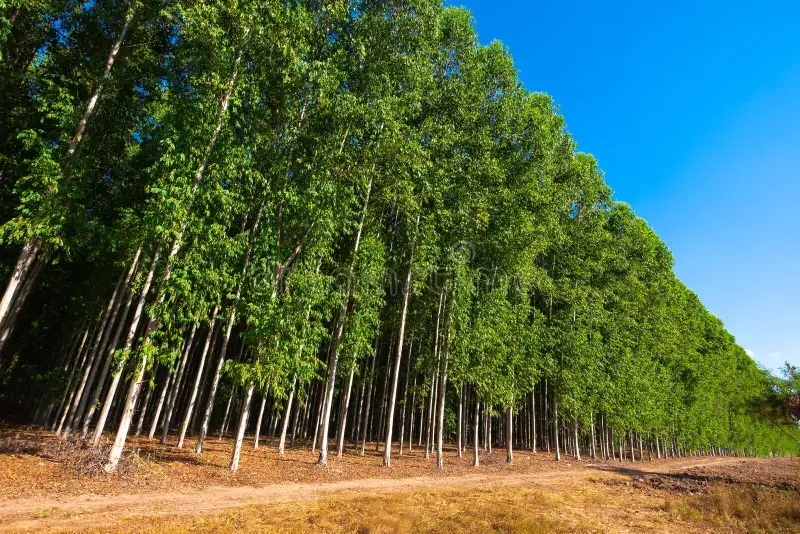
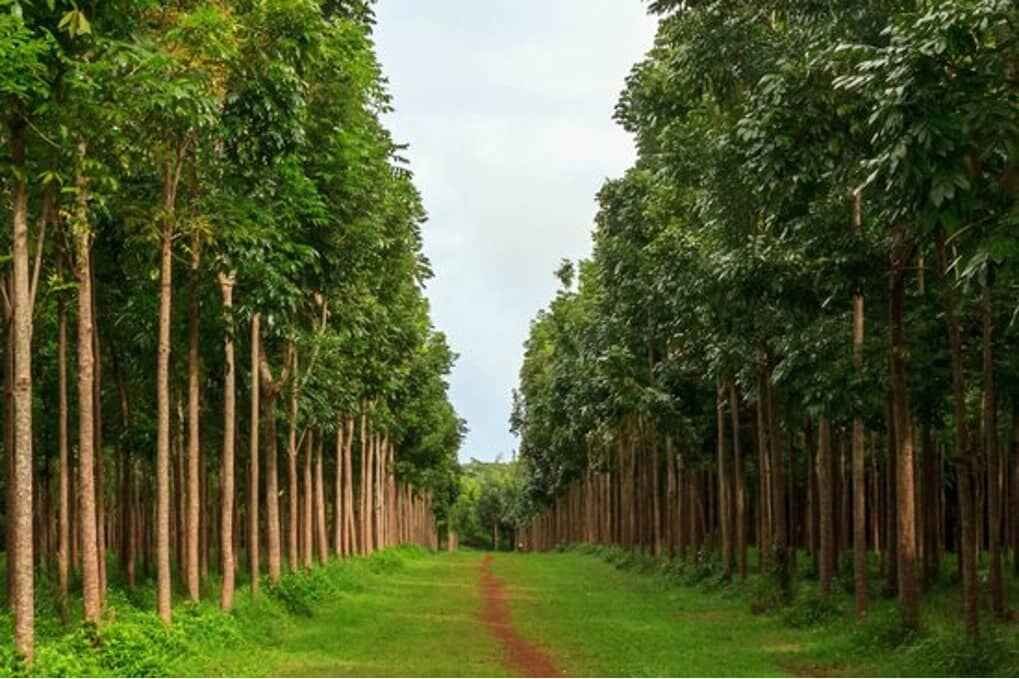
Benifit of Technological Integration in Tree Farming
1. Technological Integration in Tree Farming
- Smart Irrigation Systems: Leverage IoT-based systems for automated watering and monitoring soil moisture levels, reducing water usage and improving efficiency.
- Drones for Monitoring: Use drones to monitor tree health, detect pest infestations, and assess growth patterns, reducing manual labor and increasing accuracy.
- GIS and GPS Mapping: Implement geographic information systems (GIS) for precise land mapping and crop planning, optimizing farm layout and productivity.
2. Value-Added Products
- Timber Processing: Establish on-site processing units to convert raw timber into finished products like furniture, planks, or veneers, increasing profit margins.
- Essential Oils and Extracts: Use medicinal and aromatic trees like sandalwood or eucalyptus to produce essential oils, targeting high-demand markets.
- Organic Certification: Obtain organic certification for fruit trees, ensuring premium pricing in both domestic and international markets.
3. Financial Planning and Risk Management
- Diversified Investments: Combine short-term crops (vegetables or spices) with long-term timber or fruit farming to balance cash flow and reduce financial risks.
- Insurance Coverage: Invest in agricultural insurance to protect against natural calamities, pest outbreaks, or market fluctuations.
- Green Bonds and Carbon Credits: Explore funding options through green bonds and earn additional income by selling carbon credits, especially for large-scale plantations.
4. Advanced Tree Species Selection
- Hybrid Varieties: Use hybrid tree species for faster growth, higher yields, and disease resistance. Examples include hybrid teak or high-yield mango varieties.
- Multipurpose Trees: Opt for trees that provide multiple outputs, such as moringa (leaves, pods, and oil) or coconut (water, oil, and coir).
5. Export-Oriented Approach
- Market Research: Focus on global markets with high demand for timber, essential oils, or organic fruits.
- Export Compliance: Ensure compliance with international standards and certifications, such as FSC (Forest Stewardship Council) for timber or GLOBALG.A.P. for fruits.
- Value Chain Integration: Develop partnerships with exporters and wholesalers to streamline the supply chain and increase profitability.
6. Research and Development (R&D)
- Innovative Practices: Invest in R&D to explore new tree farming techniques, such as vertical planting for high-density plantations or hydroponic tree farming.
- Collaboration with Experts: Partner with agricultural universities and research institutions to stay updated on the latest advancements in agroforestry.
7. Environmental and Social Initiatives
- Afforestation Projects: Collaborate with government bodies for large-scale tree planting initiatives, receiving financial incentives and contributing to environmental conservation.
- Community Engagement: Involve local communities in farming operations to generate employment and foster goodwill, ensuring long-term sustainability.
8. Advanced Marketing Strategies
- Eco-Branding: Market your farm as an eco-friendly, sustainable venture to attract premium customers.
- Digital Presence: Leverage social media, e-commerce platforms, and digital marketing to reach a wider audience.
- Collaborative Ventures: Partner with eco-conscious brands or NGOs to co-market your products as sustainable and environmentally friendly.
9. Long-Term Vision and Scalability
- Land Bank Strategy: Acquire additional land over time to expand tree farming operations and benefit from economies of scale.
- Vertical Integration: Control the entire value chain, from planting to final product sales, for maximum profit margins.
- Renewable Energy Integration: Install solar panels or wind turbines on the farm to power operations and sell excess energy to the grid, creating an additional revenue stream.
10. Leveraging KOSOF Trust Expertise
- Advanced Training Programs: Participate in workshops and training sessions provided by KOSOF Trust to stay ahead in the industry.
- Customized Solutions: Avail tailored solutions for large-scale plantations, including soil analysis, market insights, and financial planning.
- Sustainability Certifications: Work with KOSOF Trust to obtain certifications that highlight your commitment to sustainability, enhancing your market reputation.
Conclusion
Tree farming, when approached with advanced techniques and strategic planning, becomes a highly lucrative and impactful investment. By integrating technology, diversifying revenue streams, and leveraging the expertise of organizations like KOSOF Trust, you can maximize returns while contributing to environmental conservation and rural development. These advanced points provide a roadmap for transforming tree farming into a scalable, profitable, and sustainable business model.

